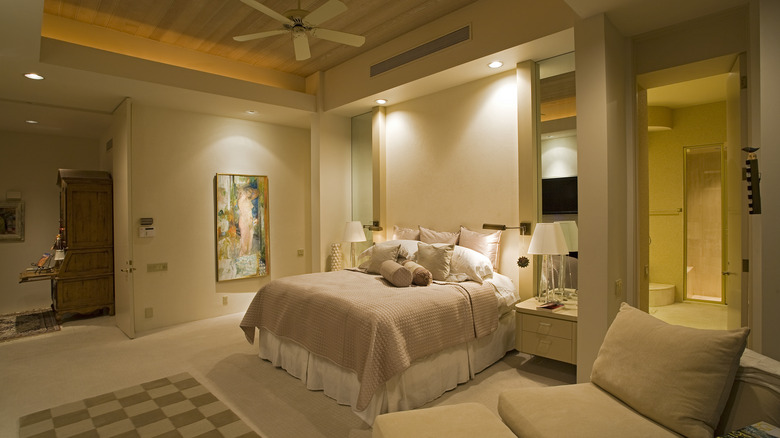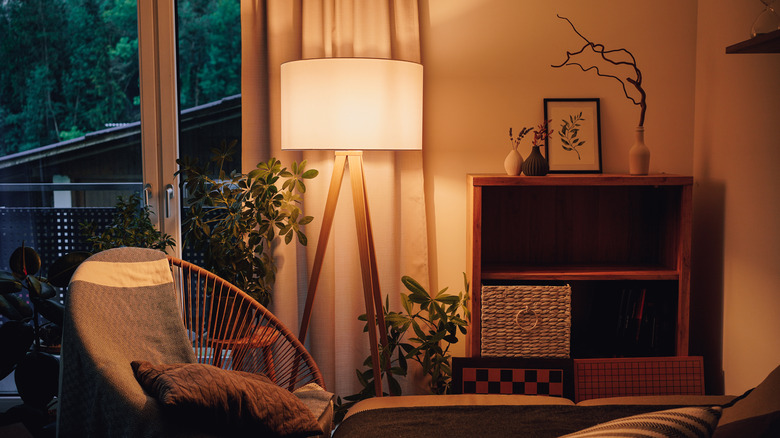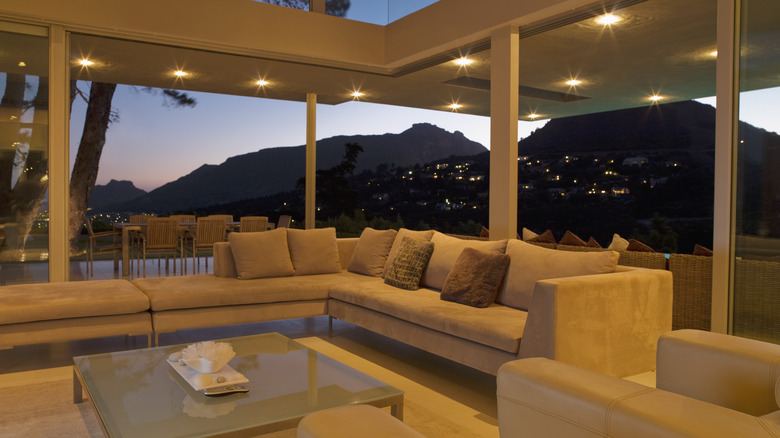What Is Ambient Lighting?
Lighting is an important contributor to any home, as the way in which light reflects off of certain objects and surfaces plays a large role in the way a home is perceived by its residents and others. A room with insufficient lighting can usher in myriad problems, including decreased home value and a decline in the mental health of those who reside in the home.
TCP Lighting states that color, and as a direct result, light, can intensify or weaken our emotions and alter our circadian rhythm, the body's internal clock that prepares us to sleep and wake up. Because of this, it's important to decorate your home with light fixtures that complement the purpose of each room.
In order to incorporate the best lighting into your home, you must first learn about the three different kinds of lighting — ambient, accent, and task — and how they work together to properly illuminate a space. Ambient lighting is arguably the most important type of lighting that a homeowner can integrate into their humble abode, so understanding how to utilize it can drastically affect the vibe of your living space.
Defining characteristics
Ambient lighting is one of the three main types of lighting, along with task and accent lighting. Ambient lighting, also called general lighting or mood lighting, refers to the central source of light within a room, or the fixture that offers a room the most light out of all other sources. Task and accent lighting work in tandem with ambient lighting in order to give the rooms in your house a unique vibe tailored to your interests as the homeowner.
Ambient lighting is most commonly found in overhead light fixtures, capable of illuminating an entire space on their own. According to Lowe's, this form of lighting is typically warm and evenly distributed across a room, as opposed to task lighting, which is weaker and more concentrated on a particular section. Ambient light fixtures include chandeliers, ceiling fan lights, and track and recessed lighting. However, pendant lights, floor lamps, and wall sconces are also considered forms of ambient lighting.
How to incorporate ambient lighting into your home
As Lowe's notes, lighting should work with a room's purpose, size, and aesthetic, and the home improvement store recommends incorporating at least two layers of lighting into any space. Since ambient lighting is considered general lighting, it typically comes from a source that can permeate a room. Use downlights, pendants, table lamps, and floor lamps to generate an even glow before implementing task lighting, which is added based on the activities you plan to work on inside the room (e.g., writing/typing/reading at a desk).
Accent lighting, meanwhile, is also a more focused light source. While ambient lighting provides evenly distributed light, accent lighting shines on a particular part of a room. For example, track lighting positioned to highlight a piece of artwork, wall gallery, or shelf of keepsakes.
Also, as said, it's important to take into account the size of the room you're trying to illuminate. While some spaces may only require a single source of ambient lighting, larger rooms, like a living room, will naturally require more. As designer Emily Henderson explains, ideally, every room should have, at minimum, two (even three) sources of lighting and that the lighting should come from different heights as well, allowing for light to reach every part of a room's space.


